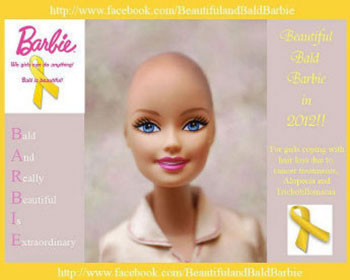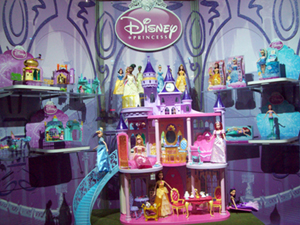Oh, my goodness! Barbie, why are you such an attention hog? Well, “hog” isn’t the right word when you are dealing with the physically fit vinyl one. Neither is “glory hound,” because Barbie is many things, but a dog is not one of them.
In typical polarizing fashion, Barbie has managed to kick off the new year with enormous Yahoo and Google searches, coverage in all forms of mass media, and a petition asking her to be a role model—yet again—but this time for a very unexpected, very meaningful, and surprisingly controversial cause.
The petition is what I am most intrigued and impressed by. In order to inspire children and women who are going through chemotherapy or are losing their hair due to illness, a groundswell of folks have taken to the Internet to pitch a beautiful and bald Barbie. They are taking their request directly to Mattel, with e-mails, wall postings, and phone calls. So far, the Facebook site, which is serving as a meeting place for the movement, has gotten more than 100,000 hits. https://www.facebook.com/BeautifulandBaldBarbie?sk=wall
What is so amazing about this push is that so many of the participants seem to be genuinely and sincerely interested in having cancer addressed as a viable part of life. It’s not a dirty word, after all, and it is an illness that could affect every person individually or their family members directly.
However, amid the well-intentioned postings, there are also some comments that seem militant and strident and scary.
Some of the folks have taken to the page to express their anger that Mattel hasn’t anted up enough in donations to charities over the year; they haven’t given enough in cash or in toys. There is also talk about mounting a physical protest in front of Mattel—which people hope will not grow violent.
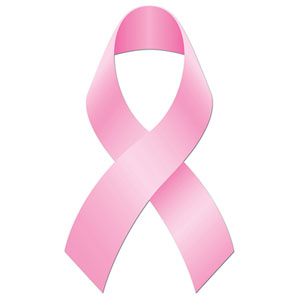 All of this seems to be spiraling out of hand for a “request” that is supposedly rooted in giving a positive role model for girls and women who are in the throes of cancer.
All of this seems to be spiraling out of hand for a “request” that is supposedly rooted in giving a positive role model for girls and women who are in the throes of cancer.
When the fuss fades away, will Mattel make a Barbie—hairless and still smiling—to show that the “Big C” can be beaten? Will they respond by releasing a doll that shows that cancer patients and cancer survivors are women who are beautiful and battling and brave in their own special ways?
Honestly, I don’t know if they will. I am really interested in seeing how this campaign gets resolved. Reacting with my heart, I would say to Mattel, “Yes, of course. Manufacture the doll. Don’t add the hair. Give a donation to the American Cancer Society from a part of the proceeds. Inspire goodwill and good karma.”
People have pointed out that in her history, Barbie has been an astronaut, an anchorwoman, a politician, and a soldier. Why not a cancer patient or as a person with alopecia? Perhaps it’s because Mattel sees the other roles as accomplishments and achievements. Alopecia is not an accomplishment, and neither is cancer. But I’d argue that “surviving” and “beating it” and “rising above and coping with it” certainly is.
patient or as a person with alopecia? Perhaps it’s because Mattel sees the other roles as accomplishments and achievements. Alopecia is not an accomplishment, and neither is cancer. But I’d argue that “surviving” and “beating it” and “rising above and coping with it” certainly is.
Plus, there are so many women who have had breast cancer scares, have endured all forms of breast issues; and doll collecting is a women’s pastime, for the most part. Wouldn’t Mattel have a built-in consumer base? A sisterly solidarity among women who have been or will be touched by cancer in its many forms. Isn’t that right? So, why not do it?
Businesses, however, don’t operate this way—especially big successful businesses.
I am sure a bottom line has to be addressed, and a business model has to be examined: How many collectors will purchase this doll? Is it made as a toy for children or part of the adult line? What edition size? Is it an open edition or limited? And if it’s limited, to what number exactly? (And will a too-small number seem unconcerned and dismissive, and a too-large number seem pessimistic?)
Worldwide distribution or just in America? Just Caucasian versions, or Asian and African-American dolls too? After all, cancer is an equal-opportunity ravager.
I’m not defending Mattel if it decides to ignore the outpouring; I’m simply explaining why something that seems like a no-brainer to us laypeople is often ultimately dismissed by corporations.
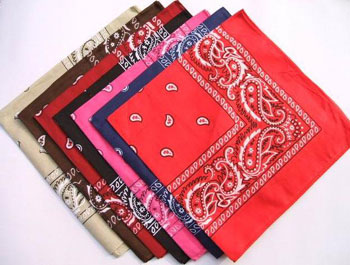 The one thing the “bald and beautiful Barbie” movement has going for it is that it might inspire other doll makers to create a doll that addresses this issue. There are tons of companies—smaller ones than Mattel—that could come to the rescue and make a name for themselves simultaneously. BJDs are so popular these days, and they lend themselves to the whole wigging issue. And since many cancer patients do choose to don wigs and/or bandannas, the doll could come with these accessories as well.
The one thing the “bald and beautiful Barbie” movement has going for it is that it might inspire other doll makers to create a doll that addresses this issue. There are tons of companies—smaller ones than Mattel—that could come to the rescue and make a name for themselves simultaneously. BJDs are so popular these days, and they lend themselves to the whole wigging issue. And since many cancer patients do choose to don wigs and/or bandannas, the doll could come with these accessories as well.
The clamor for a bald Barbie has as many different viewpoints driving it as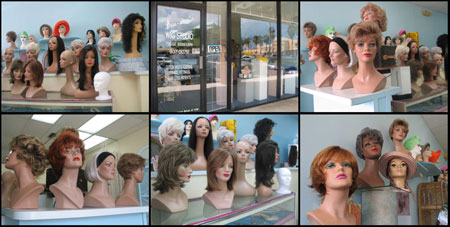 there have been Barbie models made over the years. And that’s an enormous number. One thing to keep in mind, however: when a group pushes, the push-ee doesn’t always submit and go with the flow. It sometimes digs in its heels and refuses to budge.
there have been Barbie models made over the years. And that’s an enormous number. One thing to keep in mind, however: when a group pushes, the push-ee doesn’t always submit and go with the flow. It sometimes digs in its heels and refuses to budge.
It’s a corporate decision for Mattel to make, and they may opt not to create such a doll. If so, enterprising midsize companies, here’s your chance.
Customizers and makeover artists, likewise, keep an eye on this, and perhaps this is your big break. Or is it crass or evil to look to attain some form of success or profit from a doll that depicts cancer or hair loss? This is a situation that can become touchy, without a person or a business ever meaning to be unsympathetic or callous.
Whatever the fallout might be, 2012 is only a few weeks old, and already Barbie is front and center . . . in a controversy. A familiar place for a familiar face.

